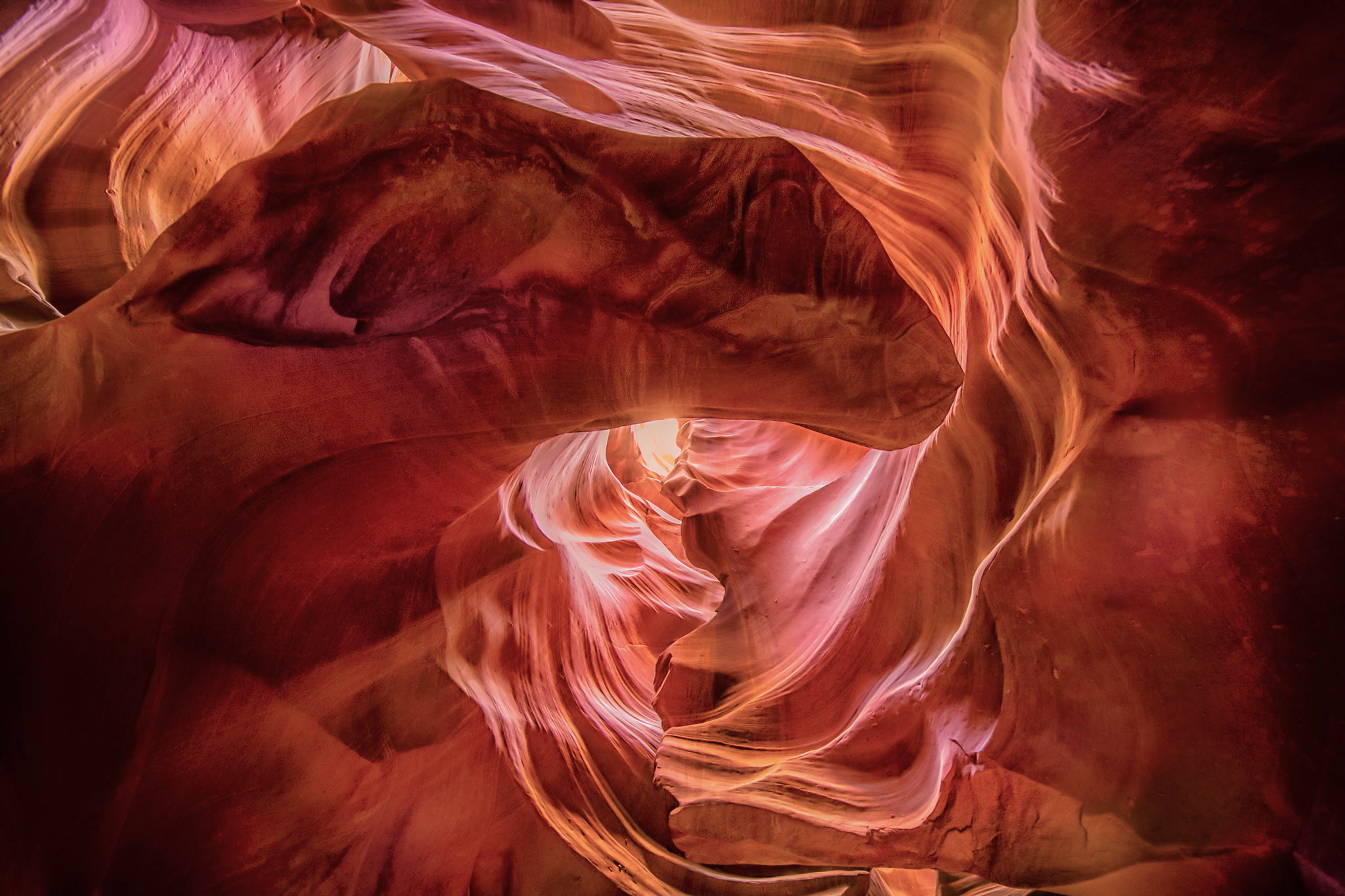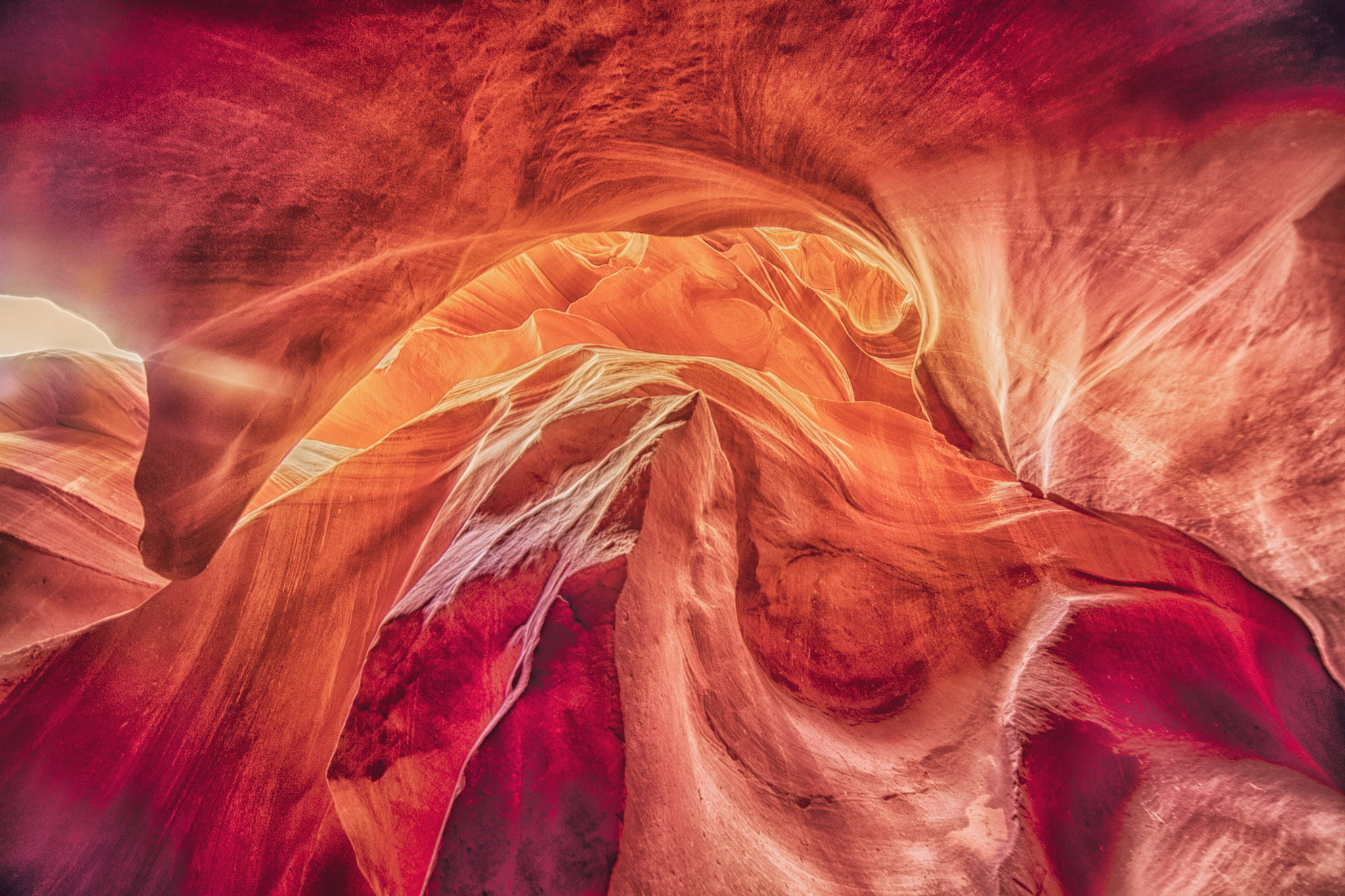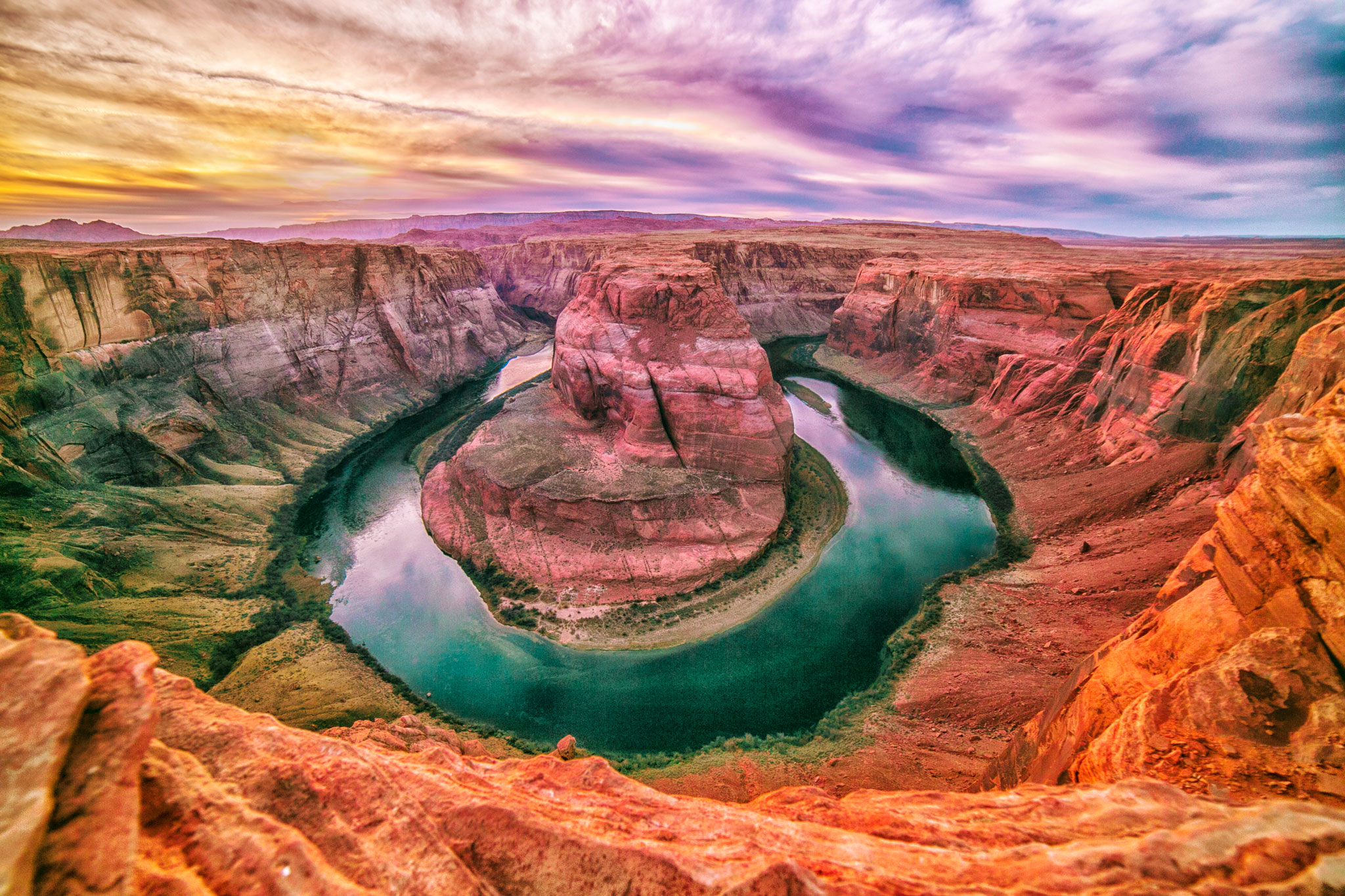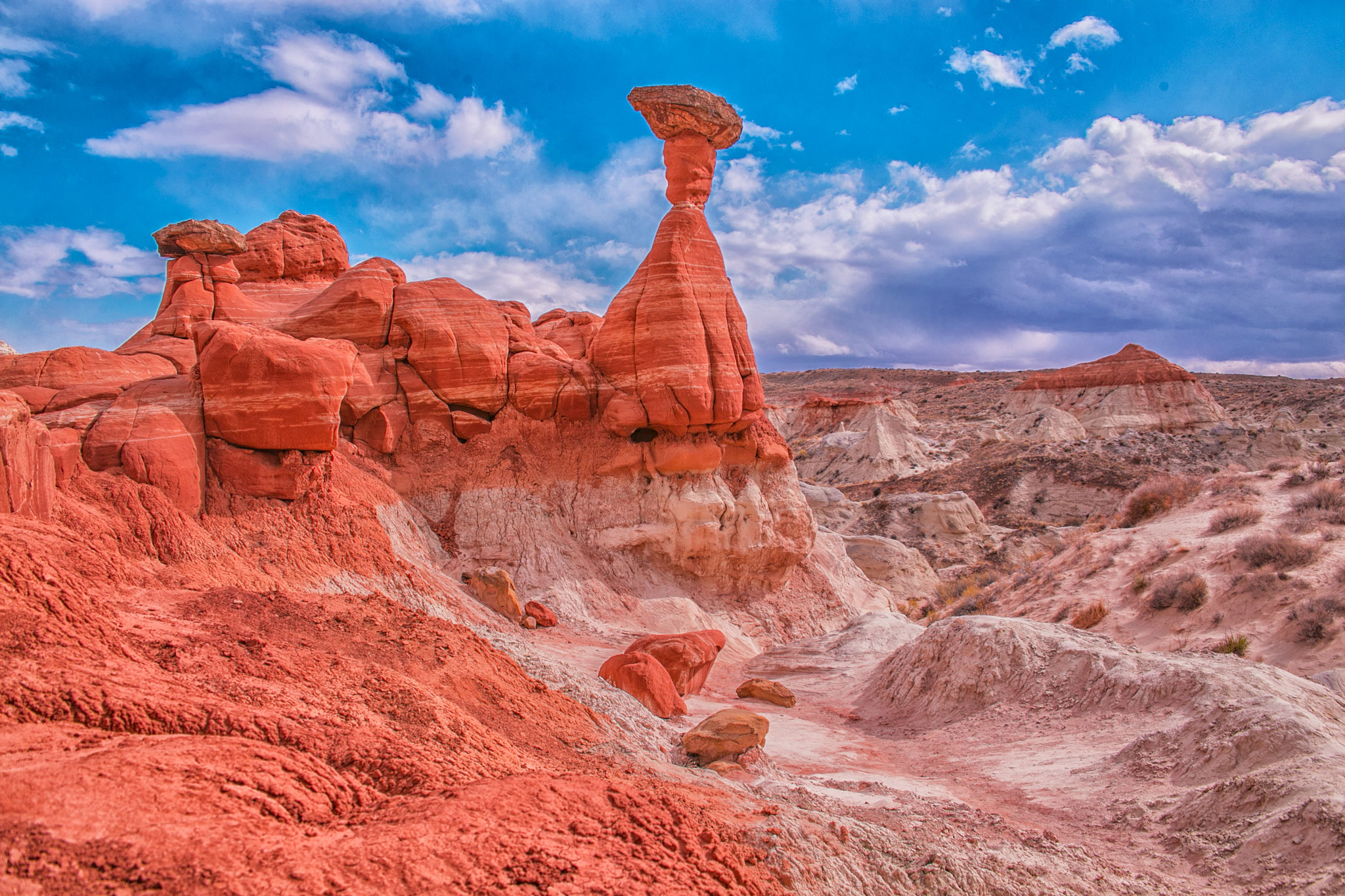Woman in the Wind:
Exploring The Arizona And Utah Border
The Woman in the Wind, a digitally manipulated photograph from Antelope Canyon, Arizona. The Woman in the Wind, also called the Lady in the Wind and the Angel, is one of the most infamous sandstone structures found in the beautiful Lower Antelope Canyon. The photograph has been manipulated to bring out the surreal nature of other nearby structures, including the Eagle, two tiger heads and a man. Photo Composite/ Illustration by Mighty.Beautiful Art Studio
“Woman in the Wind
Poetry by Mighty.Beautiful
I am
Do not love
the woman
you think I am.
I am not
the woman
in the wind.
I am
the wind
in the woman.
Love the wind.”
Woman in the Wind 12” X 18” Artist’s Print, Antelope Canyon Souvenir Art Print, Page Arizona Travel Souvenir by Mighty Beautiful Art Studio, Slot Canyon Photography, Photocomposite, Photo Art for Sale, Southwest Home Decor, Independent Artist Prints for Sale
I've been wanting to go to Antelope Canyon ever since it became a thing on my Pinterest feed a few years ago. I just found myself so mesmerized by the lines and the light, the stories told by the canyon walls of the changing winds and waters in the centuries gone by and on the canyon walls of the minutes passing by, through the sun's rays and the colors it shows. Through their lines and curves and by being observed as both rock and light, slot canyons just seem to be both masculine and feminine at the same time; they embody the energy of a god, and from above, the canyons look like nature’s handwriting, wind and water on earth acting the same as pen and ink on paper.
The canyons are full of special formations, but my favorite is the Woman in the Wind, also called the Lady in the Wind and the Angel. It depicts a woman breaking free through the red sand stone rock, her hair flying wildly in the wind, but for all her effort, she’s still there, trapped in stone and time. Near her is an epic scene, carved from flash floods and imagination: twin tiger heads stand under an eagle in full flight; a man watches everything.
As I stood there, taking that scene in for the few seconds I was alotted, it struck me that I both identified with the woman in the wind, and didn’t. I wrote a short poem about that moment and about what it feels like to be both judged and admired as a woman — for my hair, for my skin, for my eyes and my smile and my softness or my toughness. The truth is, I’ve never liked to be judged or admired for those things; I want to be judged for the forces inside me that have me who I am. This giant sandstone sculpture was the living embodiment of that sentiment.
But Antelope Canyon is a magical place throughout. Every step you take, every angle you tilt your head, is a bit different. There is no shortage of possible photographs here.
Page, Arizona Gallery



















Travel Information
Antelope Canyon is actually two separate canyons, though very close to each other: Upper Antelope Canyon, which is an impressive above-ground canyon with fairly wide openings at the bottom, and Lower Antelope Canyon, which is a stunning surprise below the surface and very narrow at the bottom. Both are on Navajo Nation land in Page, Arizona. Both canyons are very, very crowded with tourists; Lower Antelope Canyon has some ladders to climb. I went in February, which is supposed to be the slow season because the sun's rays can't get high enough in the sky to fully light up the bottom of Upper Antelope Canyon, the scene for which the canyon is perhaps most famous.
Both canyons require tours, though the tours don't require reservations. I booked a photography tour through Adventurous Antelope Canyon to get the most time possible within the canyon itself and am so glad I did. I got a tour guide all to myself, and that was incredibly helpful to getting the shots I wanted to get, as my guide ushered the many larger groups through or stopped them so that I could capture an angle or a structure, while also pointing out the most popular formations, legends and features of the canyon. But even having a longer tour and a guide to myself, the experience felt incredibly rushed — there are just so many ways to capture the canyons, their lines and their curves. I could have easily stayed there all day.
Unfortunately, Lower Antelope Canyon no longer offers photography tours (or tripods), so I had to settle for a regular sight seeing tour. I went through Dixie Ellis’ Lower Antelope Canyon Tours. They had groups of busses coming, it seemed like all day long, and each guide seemed to be in charge of about 10-15 people. My guide spent a lot of time both talking with me and trying to come up with creative ways to give me some space within the canyon — no easy feat considering how narrow the bottom is and how many groups there are going through the canyon at once. Along the way, the guide stopped to take plenty of pictures of everyone at various stops, which was also really great because I usually forget to take pictures of myself. Because it was a windy day and Lower Antelope Canyon is beneath the surface, sand from the sprinkled down on us through the tour. It was still no doubt beautiful though, and it's impossible for me to say which canyon I liked more. It was pretty insane exiting from Lower Antelope Canyon, though, realizing the tiny slot in the earth you just walked through and knowing all the secrets that lay down there. It makes you look at the ground differently.
Now, you might wonder if a four-hour drive through Arizona (assuming you fly into Phoenix) is really worth it to spend about three hours looking at two different slot canyons, but I can assure you: it is, and that's not all there is to do in Arizona. Page is also home to Horseshoe Bend, which requires a just a short hike to one of the greatest places on Earth to learn how to say "Be CAREFUL!" in 13 different languages. And the drive to Page is pretty scenic, full of cacti and pink hills. There is, of course, the Grand Canyon to visit. If you've got more time, Sedona is home to the Devil's Bridge Trail, a fairly easy-to-moderate hike which has an amazing view at the end (so long as you're not afraid of heights)! If that's not enough nature, Grand Staircase Escalante National Monument, Monument Valley and Petrified Forest National Park are all only a few hours away — so north, west, east or south, you can go wherever the wind blows. And Phoenix isn't the only location to fly into — flying into Salt Lake City and driving south to the Arizona/Utah border would mean getting a chance to see all the wonders in the many national parks found in Utah — Arches, Zion, Bryce Canyon, Canyonlands, and Capitol Reef National Park. That? Is a beautiful trip, guaranteed.
I had limited time during my road trip so I chose to take a day and go north into Utah to Grand Staircase Escalante National Monument. It’s a stunning area with some unique hiking opportunities — I hiked the Toadstool Hoodoos trail, a fairly easy 1.8-mile trail near Paria, Utah, which offered a lot of unique rock formations and wide-open views of the hilly surroundings.
Grand Staircase-Escalante National Monument Gallery











Photographs of Grand Staircase-Escalante National Park by Mighty.Beautiful Art Studio.

